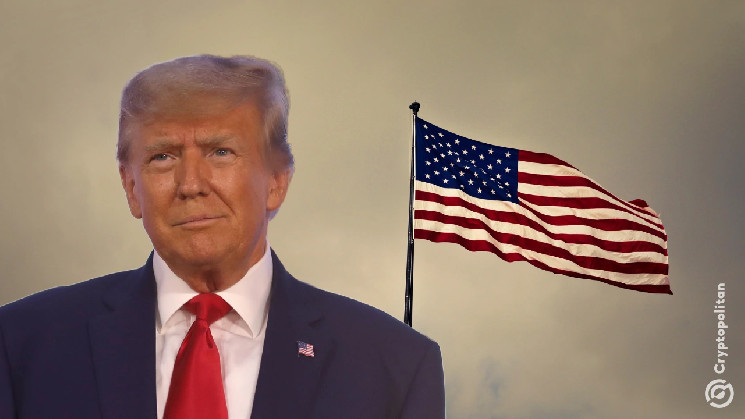
Elon Musk promised to slash $2 trillion from federal spending. His quirky “Department of Government Efficiency” (D.O.G.E), commissioned by President Trump, was supposed to trim the fat off America’s bloated budget. But reality and a fragile economy might force him to scrap the project altogether.
Now Elon himself has admitted that the goal is a moonshot. Speaking in an interview on X (formerly Twitter), the eccentric billionaire downgraded his $2 trillion goal, saying, “We’ve got a good shot at $1 trillion.”
Experts were quick to remind him that even this toned-down goal borders on fantasy. The entire discretionary budget is $1.7 trillion. How do you cut $2 trillion from something that doesn’t even add up to $2 trillion? Spoiler: you don’t.
Economic forecasts are mixed
The U.S. economy isn’t tanking, but it’s not exactly cruising, either. Goldman Sachs estimates the economy will grow by 2.5% in 2025, comfortably ahead of Bloomberg’s economist survey, which pegs growth at 1.9%.
The Conference Board is a little less bullish, projecting 2% growth for the year, but even that’s an upgrade from the earlier forecast of 1.7%. S&P Global Ratings echoes the 2% figure, all of which feels like a collective exhale compared to 2024’s 2.7%.
However, the labor market is cooling. Unemployment is expected to hit 4.2%, up from 3.7% a year earlier. Job creation is slowing, averaging around 150,000 jobs a month. Not bad, but it’s clear the best days are behind us.
Then there’s inflation—down from its 2022 peak of 9.1% to a more palatable 3% in late 2024. But hitting the Federal Reserve’s coveted 2% target? That’s the unicorn everyone keeps chasing. Analysts think it’ll stabilize there by the end of 2025.
The Fed, meanwhile, is playing its own game, slowly cutting interest rates. By October 2025, the federal funds rate might settle in the 3.00–3.25% range, a cautious move designed to balance growth and inflation.
D.O.G.E’s impossible dream
D.O.G.E was supposed to be the crown jewel of Trump’s economic plans. Elon, co-leading the project with biotech entrepreneur Vivek Ramaswamy, had one job: find inefficiencies in government spending and fix them. Simple, right? Wrong.
The department has no real power. It’s basically an advisory panel that throws ideas into the political void, hoping Congress or the White House picks them up. And while Elon’s ego might be big enough to carry the weight, his numbers just aren’t.
Cutting $1 trillion would mean gutting mandatory spending programs like Medicaid. “Hardship” is how Elon describes the fallout from these cuts. Political chaos is more like it.
And let’s not forget the wildfires burning through California as we speak. They’re shaping up to be the most expensive wildfire disaster in U.S. history, with damages between $250 billion and $275 billion. Over 12,000 structures are gone, 24 people have lost their lives, and rebuilding will take decades.
These costs aren’t just tragic—they’re a direct threat to D.O.G.E’s mission. Every dollar spent on disaster relief is a dollar Elon can’t touch.
Tariffs are another wildcard. Trump’s administration could raise them beyond the current average of 2%. That might sound small, but even a 1% hike in tariffs can bump inflation by 0.1%. For an economy still grappling with inflation control, it’s a problem no one wants to deal with.
Inflation and the Trump effect
Inflation is no longer just an economic issue, it’s now a political one too. Joe Lavorgna, an economic adviser from Trump’s first term, pointed out that the Federal Reserve’s recent decisions are perplexing. Last September, they cut rates by 50 basis points, thinking the job market was slowing.
But when job numbers rebounded, they kept cutting by 25 basis points in November and December, even though inflation was ticking up. If inflation stays sticky, Lavorgna warns, the Fed will have no one to blame but itself.
Trump’s growth agenda hinges on keeping inflation low, but partisan expectations aren’t helping. During Biden’s administration, Republicans were bracing for high inflation, while Democrats were more optimistic. Now the roles are reversed.
Republicans think inflation will stay at 0.1% (laughable), while Democrats expect a more realistic 4%. If inflation hits 4%, Trump’s policies could implode under the weight of higher interest rates.
Businesses, meanwhile, are going all-in on Trump’s pro-growth vibe. December’s rise in jobs might have been a direct result of his election victory. Companies, feeling optimistic, started hiring more. Good for jobs, bad for inflation. More jobs mean more spending, more spending means inflation doesn’t go away.
D.O.G.E is a microcosm of Trump’s larger economic gamble. The administration is trying to thread the needle—cutting costs without sacrificing growth. But with inflation pressures, natural disasters, and a fragile economy, it’s a nearly impossible task.
Concerns about Elon’s influence within the administration may also play a role. Trump already feels like he has granted him too much power—especially with rumors of Elon potentially running for office in 2028—he’ll likely scale back on their association anyway.
